Adrian Bowyer (left) and Vik Olliver (right) with a parent RepRap machine, made on a conventional rapid prototyper, and the first complete working child RepRap machine, made by the RepRap on the left. The child machine made its first successful grandchild part at 14:00 hours UTC on 29 May 2008 at Bath University in the UK, a few minutes after it was assembled. This is the first self replication of any RepRap 3D printer.
Adrian had come up with the idea of RepRap in 2003 and it first appeared online on the Bath University website in February 2004.
In celebration of RepRap’s 10th birthday we have a sale on Fisher Kits (25% off!), Filament and Components until the end of the week.
We visited E3D last weekend during the Hangprinter build weekend and they were kind enough to provide a RepRap Birthday cake for the celebration.
 |
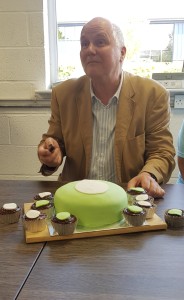 |
These are 3D-printing and maker things that are personal favourites of Adrian’s over the last 10 years (RepRap inventions – to the best of our knowledge – in green; no particular order):
- Distributed3D printer controllers (one microcontroller for each drive or heater in a machine) [Link October 2008]
- Single-board 3D printer controllers (yes; we know…) [Link March 2011]
- Thingiverse and the like [Link November 2008]
- 3D printed shells for hermit crabs [Link February 2012]
- Masterspool [Link January 2018]
- PLA for 3D printing [Link June 2005]
- Printing electrical conductors embedded in conventional 3D-printed plastic [Link April 2009]
- Web-interface 3D-printer control software [Link November 2012]
- Heated beds,
- Delta printers [Link July 2012]
- Bowden hot ends [Link June 2009]
- Mixer hot ends [Link July 2012]
- Prusa-style multi filament selectors/train-tracks [Link & Link April 2014]
- Hangprinters [Link March 2017]
- Printing with clay and ceramic [Link Feb 2010]
- Head changers [Link August 2007]
- Multidimensinal DDA software to synchronise movement and extruder feed, [Link May 2009]
- Growth and increased attendance at Makerspaces and Maker Faires, [Link]
- Recycling filament makers [Link]
- 3D-printed prostheses for medicine and the disabled [Link]
- 3D-printed buildings [Link]
Things to look out for in the future (some have been demonstrated experimentally already):
- Mixed technology (like FFF and SLA in the same machine),
- Open-source CAD that can easily combine printed electronics and printed mechanics,
- Printed bearings with good wear characteristics and low friction,
- Printed electric motors,
- Practical 3D-printed clothing and footwear,
- Micromachines with multiple materials (resolution of about 0.1 microns), and
- 3D-printed electric cars, lorries, boats and aircraft.
Adrian says, “The very first RepRap Darwin had PCBs for each component and an RS232 ring communication system to synchronise them all. These days it would be interesting to make a similar system with just power in the wires going to everything, and optical fibres for all the data. I think Good Enough CNC did this, though that is no longer active.
“One of the very first RepRap experiments done by Ed Sells and me in 2005 was to lay down Field’s metal in channels in a 3D print to make three dimensional conductors for a little robot. I suspect that the thing that is holding back 3D-printed combined electronic and mechanical devices is not the ability to print such devices in one shot, but automatic open-source CAD software that works like Kicad and FreeCAD seamlessly combined. Maybe there’s a project there for someone…
“I think I was the first person to think of the mixer hot end to get many colours from just a few primary-coloured filaments. My student James Corbett made the first really good working one of these in 2012.
“To be more general, and to look to the future: a current political and economic worry is the possible negative effect of robotics and AI on employment and wealth distribution. Like almost all political and economic worries this is probably overblown, but it depends for the cogency of its conclusions on centralised economies-of-scale production systems like the factories we have now. If they had no people in them, the argument goes, all the profits of production (and hence wealth) would get very concentrated in a few hands. But an open-source self-replicating production system like RepRap that is distributed throughout society right down to the individual level would not be nearly so problematic. Factories would fade into history like newspapers and high-street shops, and wealth concentration would go into reverse, as individual people made their own wealth for themselves and others.”
What are some of your favourite things from the past 10 years, and what do you think the future holds?
Connect with us
Keep up to date on the latest RepRap Ltd news:


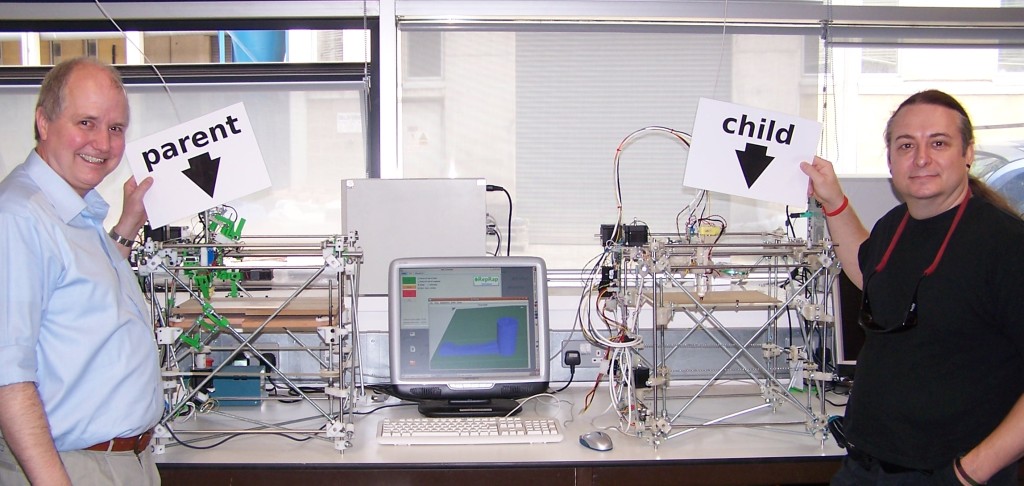
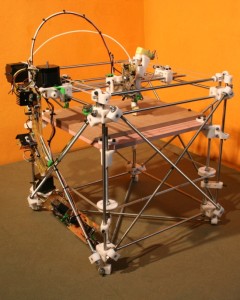
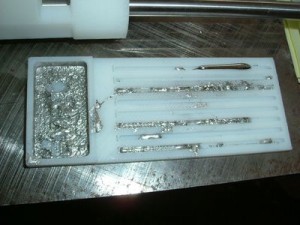
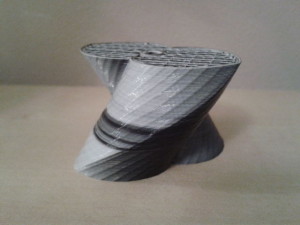
Well, just a couple more:
– first 3D printer in space
– nano-printer (atom level)
– print a working liver